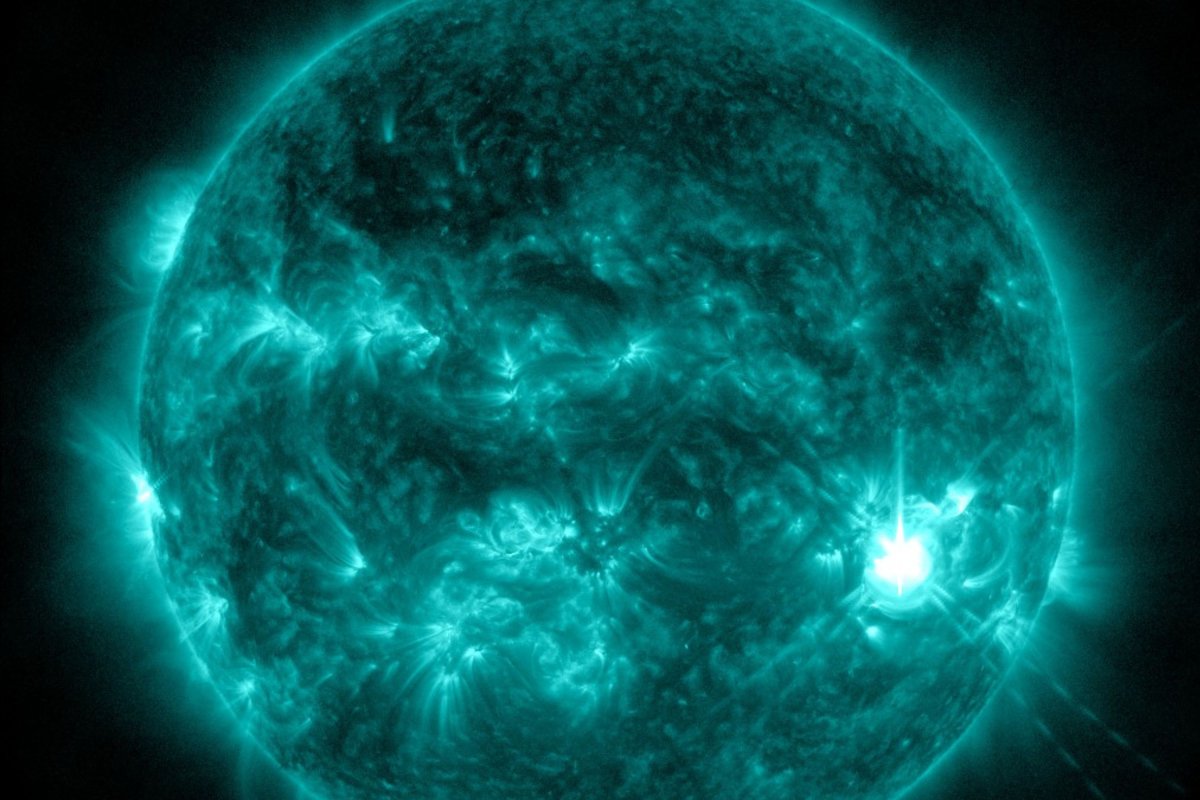A giant sunspot on the surface of the sun is moving towards the perfect position where it could explode and shower protons on Earth.
The giant sunspot, named AR3738, is unstable. “Beta Gamma Delta” Magnetic Field It is set to release an explosion of solar plasma Coronal mass ejection Or a flash of radiation, like a solar flare.
Sunspots “Danger Zone” Protons resulting from sunspot activity can be accelerated towards Earth by the phenomenon. It is called the Parker Spiral. It could potentially affect Earth’s satellites.
More from the Newsweek Vault: How to build an emergency fund
National Aeronautics and Space Administration (NASA)
Proton storms, also known as solar proton events (SPEs), occur when the Sun releases a large number of energetic protons. These protons are positively charged particles that are accelerated to high speeds by solar flares or coronal mass ejections and travel towards Earth along the Parker Spiral.
The Parker spiral is a model that represents the shape of the Sun’s magnetic field as it permeates the solar system. As the Sun rotates on its axis once every 27 days, it twists its magnetic field lines into a spiral. This means that proton storms can be carried along a spiral path and potentially hurtled towards Earth if released from the right spot on the Sun’s surface.
When these high-energy protons reach Earth’s magnetosphere, they are sent barrages towards the planet’s poles, which can have several effects.
One possible effect of the proton storm could be damage to satellite electronics, which could lead to communications disruptions and the malfunctioning of navigation and weather satellites.
Additionally, proton storms could pose significant radiation hazards to astronauts in space, especially those outside Earth’s protective magnetosphere, and could also affect passengers and crew during high-altitude polar flights, as these regions are more susceptible to exposure to solar radiation.

NASA’s solar observation satellite
On Earth, proton storms can disrupt electrical currents in power lines, potentially causing power grid outages, and can disrupt high-frequency wireless communications, causing radio interference. When the high-energy particles interact with the Earth’s atmosphere, It produces spectacular auroras.
If no sunspots explode within the next few days, they will move out of the danger zone and the Earth will be safe.
The same sunspots X1.2 class solar flare on July 14thThe X1.9 class flare was released just on July 16th, causing radio interference over Australia, Southeast Asia and Japan.
Do you have any tips for scientific articles? Newsweek What should we report about sunspots? Have a question about sunspots? Contact us at [email protected].
Rare knowledge
Newsweek is committed to challenging conventional wisdom, seeking common ground and finding connections.
Newsweek is committed to challenging conventional wisdom, seeking common ground and finding connections.


